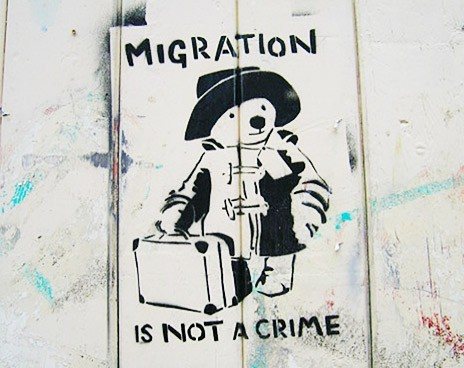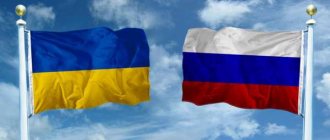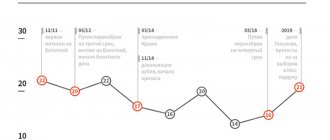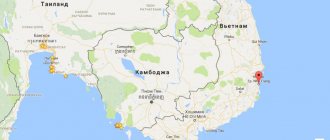Migration growth in Russia in the first four months of the year. In their opinion, such dynamics look abnormal. Migration growth is calculated as the difference between those who arrived in the country and those who left it. In the first quarter, this figure exceeded the data of the last 10 years for the same period, the study says. Most of the migrants came from Armenia and Ukraine. Without migration, it is impossible to overcome population decline, they warned.
The number of labor migrants in Russia has decreased by almost a quarter over the year
VIDEO ON THE TOPIC: Why are there no Russians and other peoples in Armenia?
#news2019 #Russia #Armenia Migration growth in Russia in the first four months of the year. In their opinion, such dynamics look abnormal. Migration growth is calculated as the difference between those who arrived in the country and those who left it. In the first quarter, this figure exceeded the data of the last 10 years for the same period, the study says. Most of the migrants came from Armenia and Ukraine.
Without migration, it is impossible to overcome population decline, they warned. One of the reasons for this growth could be the revision in the city of Rosstat switched to new forms of recording migrants, Mkrtchyan noted. There were no changes in the methodology during this period, explained a Rosstat representative: they switched to new forms of observation from the beginning of the year, this does not affect the dynamics, but allows for better collection of information, since now not only the Ministry of Internal Affairs, but also Rosstat will monitor the data.
The growth was ensured by migrants who received temporary registration, the Rosstat representative continues: for January - May. But the number of those who left the country may increase at the end of the year.
Only 1.7 million had valid work permits and patents. It is unclear what to do with such shadow migration, Zubarevich complains. The number of workers from non-CIS countries is gradually decreasing, write experts from the Higher School of Economics. Outside of quotas, qualified workers are attracted according to lists - there are benefits for them, but under the conditions of economic sanctions, the attraction of this category, especially from the EU countries and the USA, is declining. Russia is not so attractive for migrants, especially those from far abroad, says Zubarevich: the country has fewer and fewer quality jobs and prospects.
Negative demographic trends are forcing Russia to actively compete for labor resources, experts from the Department of Research and Forecasting of the Central Bank warned. The opinion may not coincide with the position of the Central Bank: otherwise it will be difficult to maintain production at the current level. Harvard Business Review. How to spend it. Directory of companies. News Media2.
The number of migrants arriving in Russia this year will be a record for the last 10 years. Plekhanov Elena Egorova. According to her, there are now about 12 million visitors from other countries in Russia, this figure is comparable to Germany, our country ranks fourth in the world.
Last November, for the first time in almost 20 years, Rosstat updated the order approving statistical tools for the FSB to organize monitoring of the number of foreign citizens arriving in Russia. The list of purposes of entry into Russia that was valid until the year, which was recorded by the FSB, was determined by a resolution of the State Statistics Committee of the year. The Ministry of Economic Development proposed to simplify the migration of highly qualified personnel to Russia Economics. Including work in the FSB’s list of entry purposes will improve the quality of statistical information, Chudinovskikh is sure. If a labor migrant, for example, lives in the border zone and travels back and forth ten times during the year, then this will be counted by border guards as ten units, Chudinovskikh explained. Rosstat receives data on migration based on records of territorial bodies of the Ministry of Internal Affairs.
For the first time in 20 years, the FSB revealed the number of foreigners who came to work
RU — The number of labor migrants working in Russia decreased by almost a quarter compared to September last year and amounted to about 1.8 million people, the Izvestia newspaper reported on Friday, citing statistical reports from the Russian Ministry of Internal Affairs. As of September 30, this figure amounted to thousand. The Ministry of Labor and Social Protection of the Russian Federation, which distributes quotas for attracting foreigners working in Russia on the basis of a visa, explained to the newspaper that the majority of foreign workers are citizens without visas. At the same time, according to the Ministry of Labor, most foreign citizens come to work in Russia on the basis of a visa from China, Vietnam, Turkey, India and Serbia, Izvestia writes. Chronicle Coronavirus Pandemic Updated in Infected on
How many guest workers are there in Russia?

© Flickr
Estimates of the number of migrants living and working in Russia vary widely. Some talk about 10–15 million migrants and predict that there will only be more. Others believe that there are significantly fewer migrants, a maximum of 5 million people. Until now, all these assessments have been based mainly on the personal opinions of experts. The data published today by the Federal Migration Service allows us to fairly accurately answer the question of how many foreigners are in Russia.
The history of this data is as follows. The next day after my response to Alexey Zakharov’s letter on Slon, the head of the FMS, Konstantin Romodanovsky, called me and offered to publish data on the number of foreigners in Russia collected by the FMS. When crossing the Russian border, every foreigner is required to fill out a migration card (here it is). One part of the migration card is submitted upon entry into Russia, the other upon exit. If the second part of the card is lost, a foreigner leaving Russia is required to fill out a new card - it can be correlated with the old one using the passport number. All this is entered into the database, which means that this database contains information about all foreigners who legally entered the territory of Russia. Considering that there is a visa-free regime between Russia and most countries of the former USSR and, accordingly, there are no incentives to illegally cross the border, this database really takes into account almost all foreigners.
So, as of December 14, 2012, there were about 10.3 million foreign citizens in Russia. About a million of them stayed in Russia for less than one month. Probably most of this million are tourists or came on a short-term business trip. The remaining 9 million live in Russia for more than a month, of which almost 3 million live for more than a year (see graph below). These figures include all foreign citizens - guest workers from Central Asia, citizens of Ukraine and people from Kazakhstan living in Russia, foreign students, highly qualified specialists from Europe and the USA, and so on.
The largest number of citizens in Russia are from Uzbekistan - about 2.3 million. In second place are citizens of Ukraine (1.4 million), then Tajikistan (1.1 million), Azerbaijan (620 thousand) and Kyrgyzstan (540 thousand). There are just over 200 thousand Chinese in Russia, over 300 thousand Germans, about 200 thousand Americans, and just over 150 thousand British. Complete data on the countries of the former USSR (excluding the Baltic states), on countries with more than 100 thousand citizens in Russia and on groups of other countries are given in the table “Number of Foreigners”, and even more detailed information can be found on the FMS website. By the way, now the FMS will publish this data monthly.
These statistics do not allow us to determine the exact number of foreigners working in Russia, both legally and illegally. But we can make a rough estimate. Let's count the number of foreigners of working age (from 17 to 55 years) who arrived from countries that are a potential source of low-skilled labor migration (these are all countries of the former USSR, excluding the Baltic states, China, Turkey, Vietnam, the Philippines). There are a little more than 7 million of them, and 4.8 million of them are from the countries of Central Asia and the Caucasus. But this estimate of the number of working migrants is clearly overestimated: after all, these 7 million include all students, tourists and guests from these countries (however, more qualified specialists from Europe, the USA, Canada, Australia, and so on are not included).
Another way to estimate the number of labor migrants is to analyze the data from the “Purpose of visit” column in migration cards. Approximately 2.5 million foreigners currently in Russia indicated “employment” as the purpose of their visit. These figures roughly correspond to the number of work permits officially issued to foreigners. But it is obvious that foreigners who intend to work without permission are not inclined to notify the migration authorities about this.
Thus, the true number of foreigners of various qualifications working in Russia lies in the range from 2.5 to 7 million people. Apparently, it is approximately equal to 5–6 million people. Considering that the economically active population of Russia is 75 million people, foreigners currently make up approximately 6–7% of the workforce. This is not so little, but it is clearly not enough to talk about the dominance of migrants in the Russian labor market.
Number of foreigners (as of December 14, 2012)
| Uzbekistan | 2 333 244 |
| Ukraine | 1 383 232 |
| Tajikistan | 1 061 270 |
| Azerbaijan | 617 090 |
| Kazakhstan | 553 457 |
| Kyrgyzstan | 544 365 |
| Moldova | 529 467 |
| Armenia | 391 849 |
| Belarus | 300 489 |
| Georgia, Abkhazia, South Ossetia | 37 121 |
| Turkmenistan | 26 332 |
| Germany | 302 160 |
| China | 213 272 |
| USA | 198 473 |
| Great Britain | 161 306 |
| Finland | 128 529 |
| Türkiye | 113 433 |
| Europe (except Germany, UK, Finland, Turkey) | 641 550 |
| Asia and Oceania (except China, Australia, New Zealand) | 275 794 |
| South and Latin America | 85 350 |
| Canada, Australia, New Zealand | 73 001 |
| Near East | 68 830 |
| Africa | 28 968 |
| no data and stateless persons | 195 929 |
| Total | 10 264 511 |
Source: FMS of Russia
Number of foreigners in Russia by length of stay
Number of foreigners in Russia by purpose of stay
The number of migrants in Russia has been announced
Over the past nine years, the number of international migrants has grown by 51 million. Today, there are approximately a million people around the world who, having left their homeland, live and work abroad. Russia ranks fourth on the list of countries most attractive for migrants, with 12 million international migrants. This is stated in a new UN report. Today, migrants make up 3.5 percent of the world's population, and their numbers are growing faster than the world's population. The authors of the new report remind us that migrants, unlike refugees, go to other countries not because of the threat of persecution or death, but in order to improve their lives, find a good job or get an education. Migrants make an important contribution to promoting sustainable development, but they themselves need support and protection.
In the 1st half of the year
Population of Russia no. Cities with over a million people in Russia, Population of Russia by region. Regions of Russia: list with codes. Population density of Russia. Russia Square. Areas of regions. National composition of Russia. Average salary in Russia.
Emigration, migration and immigration: 6 differences between the terms

Economic development and changes in some state borders are the reason for the development of rapid migration processes. Television and the media use these concepts almost every day in their news resources. A person who is not well versed in the meaning of these terms may become confused by all the information provided to him. Therefore, it is worth considering each concept in more detail and trying to find out not only its exact meaning, understand the difference in terminology, but also consider the reasons for the action that it denotes.
Basic Concepts

Emigration
Derived from the Latin word “emigro”, the exact translation is “evicted”.
Thus, emigration refers to a certain process in which people move from their country, in which they previously lived permanently, to another state.
In this case, such a person will be called an emigrant, regardless of whether he is leaving in order to find a new permanent place of residence or planning a temporary stay.
And again, for many people, some confusion creeps in. So what is emigration? In other words, a person, for whatever reason, leaves his country, crosses the border of another state, and is automatically assigned the status of an emigrant.
Then a logical question arises: is a tourist also an emigrant? Absolutely false.
Unlike an emigrant, a tourist or business trip is short-term in nature, has its own specific and already designated end date, and emigration implies a long stay within another country.
In this case, a person may have one or a group of reasons for emigrating. He can leave the country because:
- cannot provide for himself in his homeland materially;
- fails to realize himself spiritually;
- wants to get education or long-term medical care abroad;
- military operations take place on the territory of another country (mainly for the category of people liable for military service);
- there is a desire to return to the homeland of our ancestors;
- There is an opportunity for career development in a foreign company.
Despite the reason for leaving, this is not always associated with the loss of citizenship of one’s native country and the automatic acquisition of citizenship of another state.
Russia is fourth on the list of countries most attractive to migrants
In April, May, August, and September of the year, the Federal State Statistics Service conducted a sample observation of migrant labor, further Observation. The observation was carried out in pursuance of the Decree of the Government of the Russian Federation of November 27. The observation was an additional module to the labor force sample survey. The frequency of monitoring is once every 5 years.
.
.
“On the organization in the Russian Federation of a system of federal numbers of international migrants of the corresponding age group.











